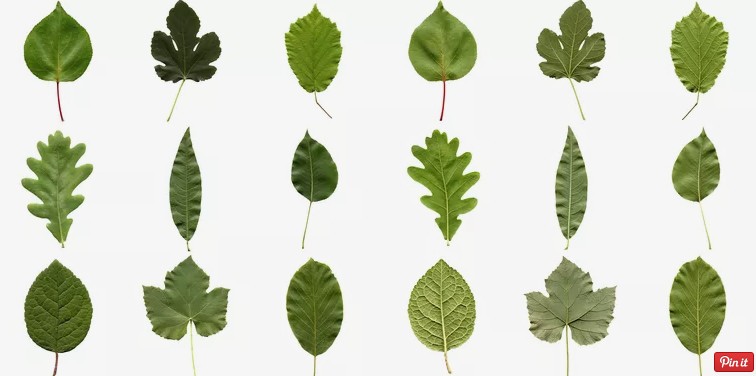
Nature’s Leaf Change from the Field of Master Mind Health (MMH)
Shared from the research of: Joseph Mercado
Article Author: Christian Cotroneo – Tree Hugger
Content Contributor: Monica Bennett
To: Article Reader
Blog Post #993
Re: Shapes on Leaves from Trees
Date and Time: Monday, June 13, 2020 at 8:34 p.m.
Dear Article Reader,
There’s one thing about leaves that science has long agreed upon: They only grow so big as available water allows — but not so big that the whole plant overheats.
The water part makes sense. We all need water to grow. And the sun? Leaves collect those rays and, through photosynthesis, convert them into food.
Too much direct sunlight and that photosynthetic engine spins hot and risks burning out.
So, when it comes to the size of leaves, plants sing a simple refrain: Water grows. Sunshine restrains. And somewhere in the middle, there’s a happy balance of a leaf that grows just the right size under its own unique set of circumstances.
But recently, after studying some 7,000 plants from around the world, Australian scientists found a new variable in nature’s math.
It’s not just the risk of overheating that keeps leaves in check, but also the cold that comes creeping at night.
“You put these two ingredients together — the risk of freezing and the risk of overheating — and this helps understand the pattern of leaf sizes you see across the entire world,” Ian Wright of Sydney’s Macquarie University, told the BBC.
In fact, plants may be much more wary of catching a chill than too many rays.
“What we’ve been able to show is over perhaps as much as half the world, the overall limits to leaf size are much more set by the risk of freezing at night than the risk of overheating during the day,” Wright explained.
And just as the conditions where plants grow vary wildly, so do the size of leaves.
But don’t all leaves do the same thing?
What science seems far less sure about is why leaves look the way they do.
Why is a fig tree’s foliage so wildly different-looking than that of, say, a fern?
Surely, nature didn’t design this swirling kaleidoscope of colors and patterns just to keep humans in a state of awe and wonder?
It turns out neither the sun nor the cold night air — and certainly not gawking humans — tell plants how to dress. That’s likely a family affair, fine-tuned and passed along genetically within a species.
“The shape of a tree’s leaves are a response to the tree species’ long term ecological and evolutionary histories,” the website for Penn State’s biology department notes.
In other words, a species develops a kind of leaf — whether that’s the simple, openness of a banana leaf or the moisture-retaining spindle that is the hardy pine needle.
Right plant, right place (and right leaf)
A 2003 study, also from Macquarie University in Australia, suggests a leaf’s style is also its function — ensuring that just the right leaf is developed for a specific environment. After all, for the plant, getting it just right is matter of life and death.
The angles in leaves, for example, may play a role in how sunlight is intercepted. Sharp angles, the study notes, may reduce the amount of light that the leaf intercepts during the blaring midday sun. In effect, a sharp-angled leaf can shade itself.
Conversely, rounder leaves have “greater daily light interception and potentially greater carbon gain.”
Of course, there are a few basic rules that keep plants from coloring too far out of nature’s lines.
A leaf’s design must be open enough to capture sunlight for all-important photosynthesis. It also needs to make sure a leaf is shaped in a way that ensures the pores — called stomatae — can soak up enough carbon dioxide, which helps fuel that process.
And that’s where size plays a key role. Like solar panels, big leaves harvest as much sunlight as they can. Smaller leaves shun too much sun and focus on keeping bundled tight in the cold.
Every species designs its foliage differently to be perfectly suited to its environment. Anything less than that spells the end of the plant.
A research paper from Iowa State’s Department of Agronomy uses the weeping fig as a dramatic example:
“There has been a lot of money spent by the horticultural people who sell decorative plants because they get a lot of complaints: ‘I bought this weeping fig, and I took it home and the leaves all fell off, every one of them!’ They say, ‘Well, take good care of it. They will grow back.’ But when they grow back, they are a different size, shape, and thickness than before.”
That’s likely because these plants develop their leaves to perfectly suit a specific situation — even if that situation is a change from the living room to the bedroom.
Ultimately, something as crucial to a plant’s survival can’t afford to be anything less than perfect. Beauty just happens to be a side-product of that functional perfection.
Content Source: TreeHugger.com

 Email Us a Message
Email Us a Message 

Please send us an email message below and we will serve you momentarily.



 Fly Over to the MMU Facebook Page with Hoot
Fly Over to the MMU Facebook Page with Hoot 

 Join the MMA Facebook Group Today
Join the MMA Facebook Group Today 